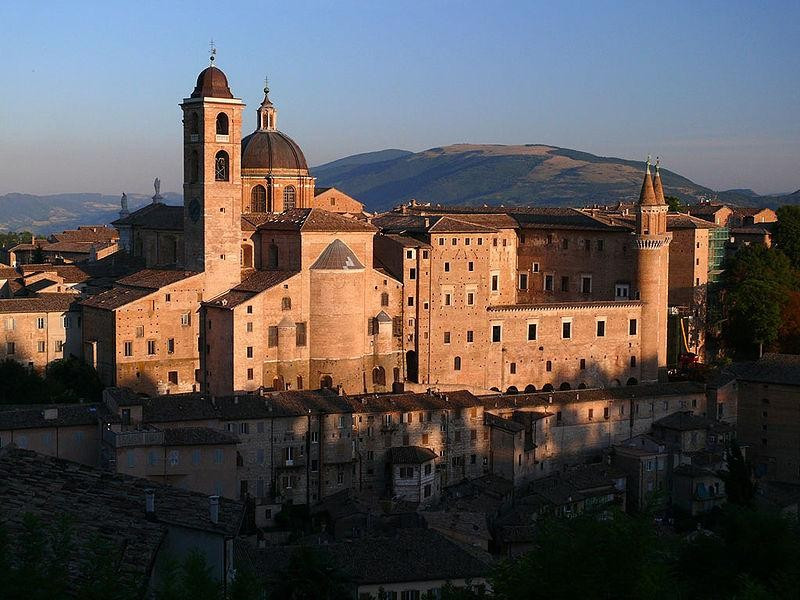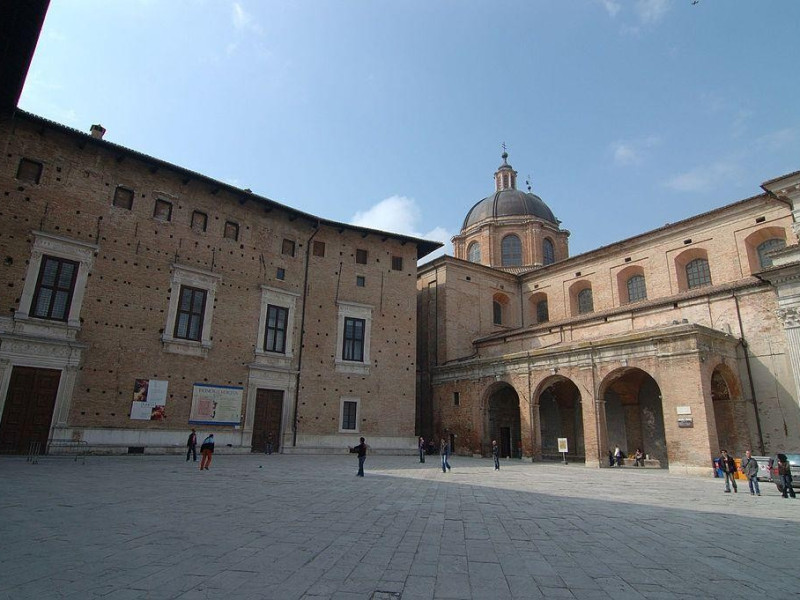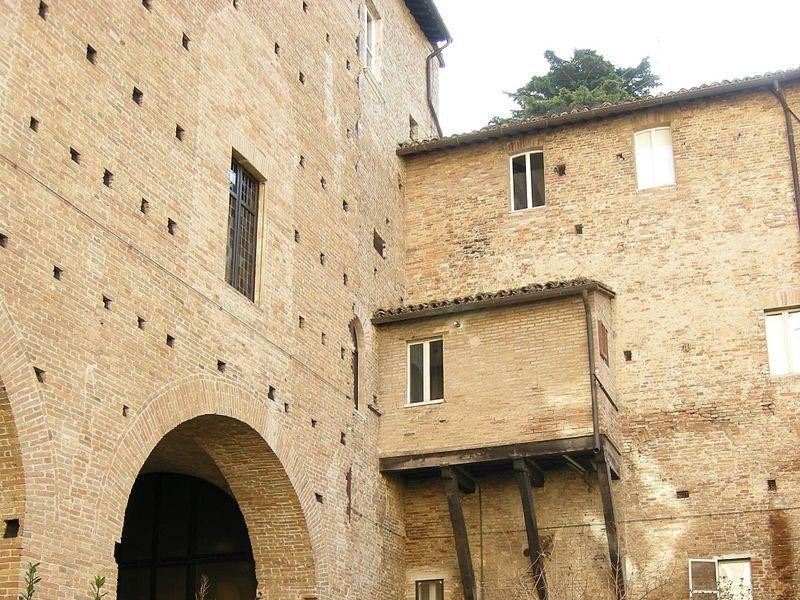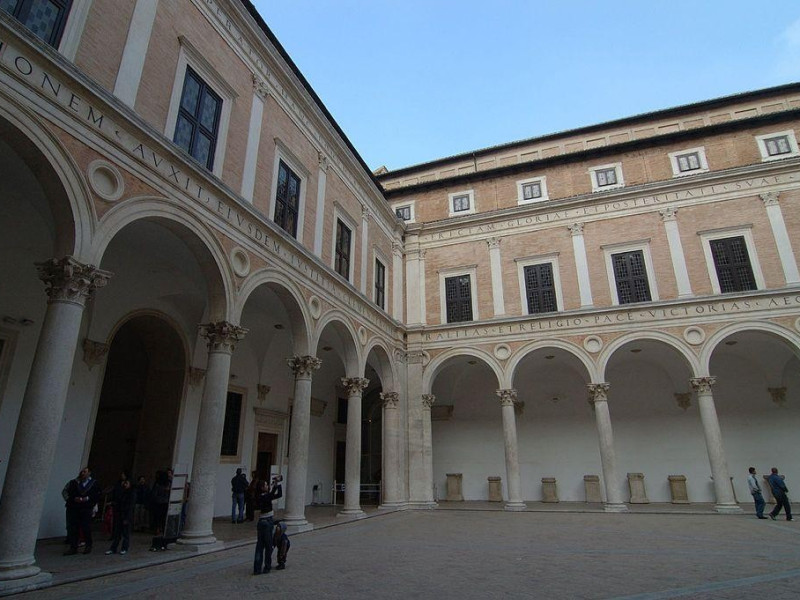Palazzo Ducale
The Ducal Palace, located opposite the Cathedral, is one of the most interesting examples of architecture and art of the entire Italian Renaissance, home to the Marche National Gallery. This is the most ambitious project of Federico da Montefeltro, with the town planning of Urbino as the "city of the prince". In 1454 he gave the order to join the two ancient ducal buildings, calling Florentine architects from Brunelleschi's school. The result, over the course of ten years, was the "Palace of the Jole", three stories, austere, typically Tuscan. To this was added the House of Melaranci and a sketch of the courtyard. After 1462, the project was changed, with the intention of making even accommodate headquarters and place where famous people. Fulcrum of the new organization was the vast colonnaded courtyard, which once linked the earlier buildings. The courtyard has classic shapes, with a portico arches, oculi and Corinthian columns on the ground floor, while the first floor is punctuated by pilasters and window lintels. Laurana had created the Grand Staircase, the Library, the Hall of Angels, the Audience Hall, the Soprallogge, the Sacred Area and Chapels. From this new core, the Palace was then expanded to the city and in the opposite direction: the facade facing the city had a form of "open book" ("L"), on Piazzale Duca Federico II; while the front overhang of Valbona was completed with the so-called "Facade of Torricini". In 1472, took over the direction of the work Francesco di Giorgio, who started a new development, taking care of the private spaces, the water systems, the lodges, the Terrace of the Rooster, the Bathroom of the Duke and the Roof Garden. Of particular interest is the famous Studiolo of Federico da Montefeltro, splendid work of trompe-l'oeil, which remain some of the most famous wood inlays of the Renaissance.






